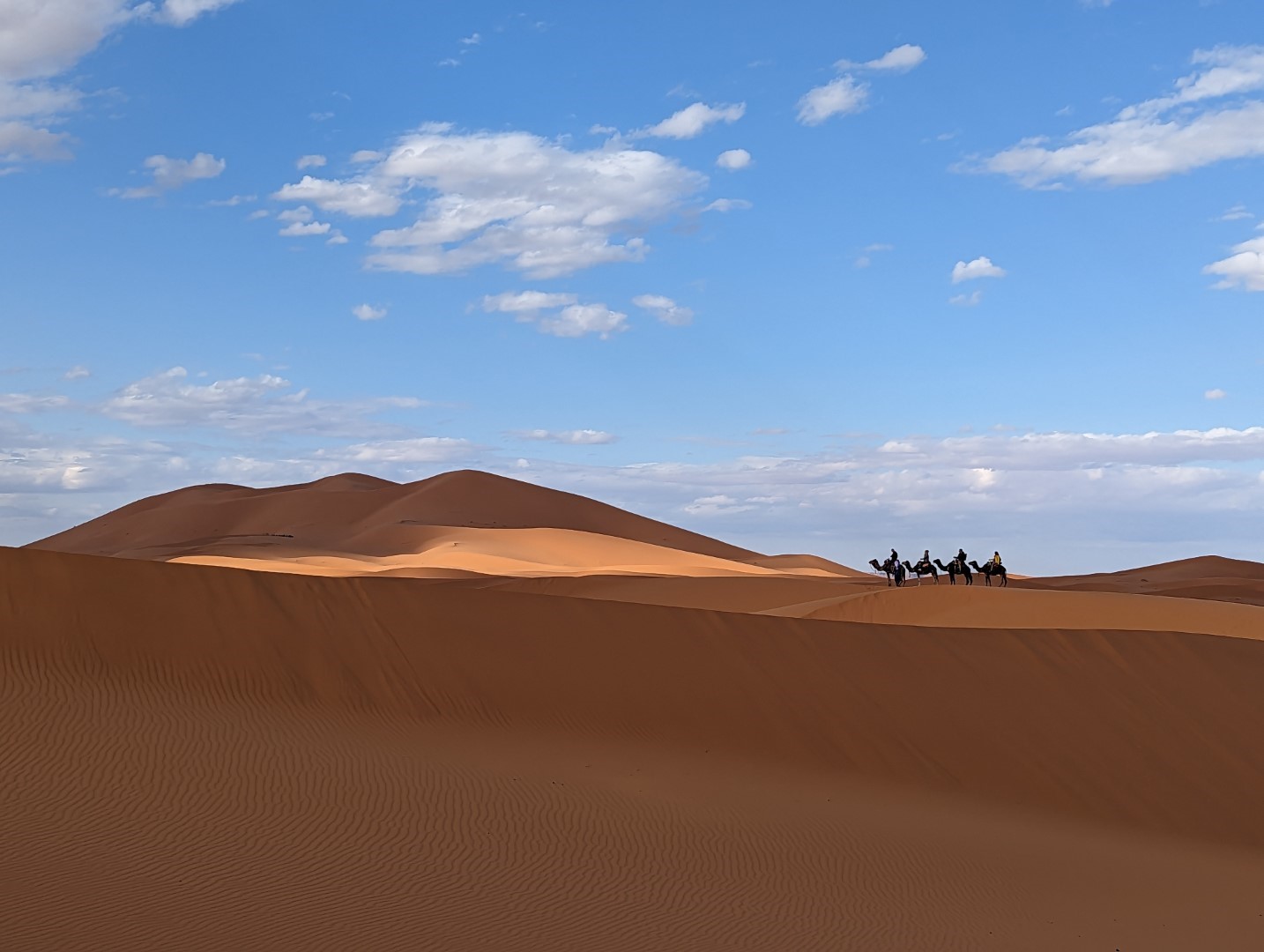First, welcome to our 100th blog post! Woohoo! It’s been a great 5 1/2 years wandering the globe. If you want to see some of our earlier posts, just click here to get to the index page. Now on with the current blog about Merzouga:
Early in the morning, an army of white vans cruised around the outer edge of the old city of Marrakech to pick up tourists and take them on trips to the desert near the border with Algeria. We signed up for a three day, two night tour. This entailed about 16 hours of driving during those three days, but covered some really interesting parts of Morocco.
The Moroccan Interior
The Atlas mountains run across Morocco and we traveled across them on the first and third days. These are high mountains, still topped with snow. We wore jackets for most of this trip as it was unusually cold for this time of year. We stopped at different locations, including ancient cities, and a valley that has a river fed year-round by springs at the head of the valley. Those valleys were irrigated by the rivers and had a wide variety of crops in the fields.




This village looks so much like a movie set, that, well it is some times used as a movie set. Parts of Gladiator 2 (with Denzel Washington) will be filmed here.













Sand Dunes and Camels
On the second day, we arrived at the edge of the desert sand dunes. All of Morocco (except the Atlas mountains) is considered part of the Sahara Desert, but there is a patch of sand dunes about 20 miles long and 4 miles wide, which is plenty of sand to experience a camel ride in the dunes of the Sahara.







I do recommend riding camels if you get the chance, but probably once is enough. Getting on/off a kneeling camel is not hard. The process of said camel standing up is more challenging. First the camel stands upright on it’s rear legs, followed a few moments later by it’s front legs. As a result the rider is (with little warning) thrown abruptly from a level position into a 45 degree diving position, and then again to a level position when the camel has finished standing. When kneeling down, the process is front legs first, back legs second. Same sudden 45-degree diving position, but now with some forward momentum. For tourist saddles, there is a built in metal T-bar to hold onto, which is an essential aid in staying on the saddle.
Susie was on the front camel (the first to kneel) which happened with no real warning. She did a camel endo, but fortunately, sand is a forgiving surface to land on.

Riding a camel uphill on sand is pretty smooth. Level is a bit challenging. Downhill is like a bad carnival ride.
We rode out onto the dunes and stopped to watch the sunset, then remounted and rode to our tent camp. We were informed that dinner was at 9:30 pm, drums and dancing around the fire until maybe 11:30 pm, and breakfast the following morning was at 5:00 am, in time to ride the camels back out into the desert to watch the sunrise. So that’s what we did, though we did head to bed during the dancing and listened to the drumming through earplugs while in bed. And in the morning, running on about 4 hours sleep, we rode back out into the dunes for sunrise, and onward to our waiting van.











On the Way to Fes
Only a few of us were going on to Fes, so we ended up in a small van/taxi for the long ride to Fes. On the way to Fes we stopped to see the Barbary Macaques, the only monkeys native to northern Africa. They live in the Atlas mountains at elevations that receive snow in the winter.

Next up, we head to Portugal to spend about three weeks walking the Camino Portugal, from Porto Portugal to Santiago de Compostela in Spain. 274 km or about 170 miles. That’s a lot of walking but we think it will be a lot of fun!


Leave a Reply to karenham63Cancel reply